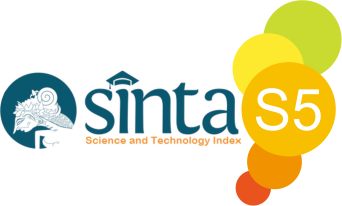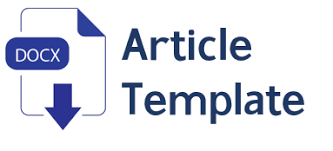Analisis Rasio Profitabilitas Pada PT. Wijaya Karya Beton Tbk
DOI:
https://doi.org/10.59086/jam.v1i2.6Keywords:
Profitability, Ratio, NPM, ROA, ROEAbstract
Downloads
References
Kasmir. 2014. Analisis Laporan Keuangan. Jakarta: Raja Grafindo Persada
Fahmi, Irham. 2012. Pengantar Manajemen Keuangan. Bandung: Alfabeta
Halim, Abdul, Achmad Tjahyono, Muhammad Fakhri Husein. 2009. Sistem Pengendalian Manajemen. Yogyakarta: UPPSTIM YKPN
Dewi, Meutia. “Analisis Rasio Keuangan Untuk Mengukur Kinerja Keuangan PT Smartfren Telecom Tbk,.” Jurnal Penelitian Ekonomi Akuntansi Vol.1.1 No (2017).
Van Horne, James C., and Wachowicz, JR., John M, 2005, Prinsip-prinsip Manajemen Keuangan, Jakarta: Salemba Empat.
Sugiyono, 2017. “Metode penelitian Kuantitatif dan kualitatif, dan R&D. Bandung Alfabeta, CV
“Laporan Tahunan 2019 PT Wijaya Karya Beton Tbk.” (n.d.). https://www.idx.co.id/.
Downloads
Published
How to Cite
Issue
Section
License
Copyright (c) 2022 Rodizah Siregar, Laylan Syafina

This work is licensed under a Creative Commons Attribution 4.0 International License.
This is an open-access journal. All works are published under the Creative Commons license CC-BY which means that all content is freely available at no charge to the user or his/her Institution. Users are allowed to read, download, copy, write, improve, and create derivative creation even for other lawful purposes, this license permits anyone to, as long as they cite and license the derivative creation under similar terms

This work is licensed under a Creative Commons Attribution 4.0 International License.
Most read articles by the same author(s)
- Amelia Putri Daulay, Laylan Syafina, Analisis Laporan Arus Kas Dalam Menilai Kinerja Keuangan PT. Sumber Satwa Sejahtera , Balance : Jurnal Akuntansi dan Manajemen: Vol. 1 No. 1 (2022): April 2022
- Nova Andani, Laylan Syafina, Analisis Akuntansi Zakat Dalam Meningkatkan Akuntabilitas Pada Badan Amil Zakat Nasional (BAZNAS) Kabupaten Deli Serdang , Balance : Jurnal Akuntansi dan Manajemen: Vol. 1 No. 1 (2022): April 2022
- Lokot al-Amin Ritonga Lokot, Yenni Samri Juliati, Laylan Syafina , Pengaruh Tekanan Pesaing dan Beban Pokok Penjualan terhadap Penentuan Harga Jual dan Kinerja Bisnis Usaha , Balance : Jurnal Akuntansi dan Manajemen: Vol. 2 No. 3 (2023): Desember 2023


















